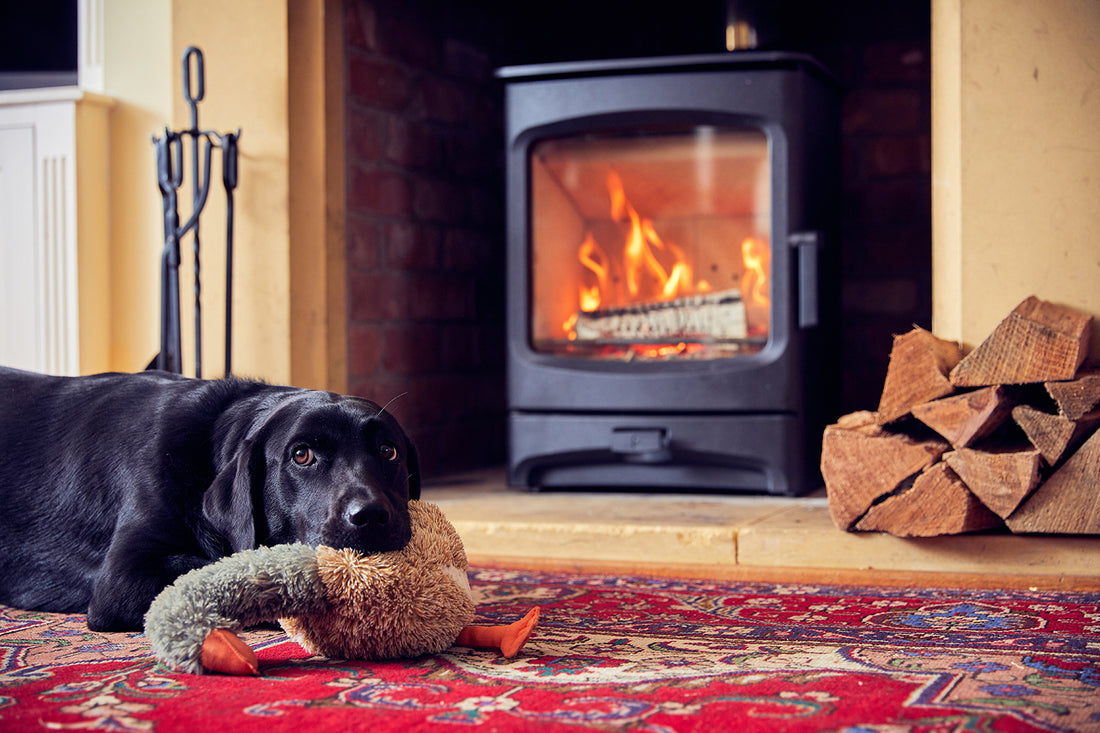
Emissions from wood burning stoves half of original estimate
Share
Despite the negative press over the last few years, it is encouraging to see a significant increase in stove sales, some say as much as 20% and if parts etc. were easier to source, could well have been even higher. This of course is perhaps not surprising when gas prices have increased by so much – we have seen this before when people start to realise that wood burning can actually provide a very cost-effective way to heat your home, not to mention the benefits of fuel security, particularly at a time when Russia are threatening war with Ukraine.
It really does make you think, especially with the recent announcement that the energy price cap will increase by £693 per year from April 1st for approx. 22 million customers. You could purchase 4.2m3 of kiln dried logs for the same money and on average I use about 3-4m3 per annum on my stove, using it most evenings and weekends from October to April.
You will be aware that as of January 1st 2022 it became law for manufacturers to only make stoves that are approved to Ecodesign standards, so its just worth checking when you make your purchase that the manufacturer meets the criteria. Important to note that you can still buy stock of non Ecodesign stoves, but the latest SIA (Stove Industry Alliance) figures suggest that 79% of all stoves sold are now Ecodesign. Look out for the SIA’s new clearSkies mark as this certification mark takes stoves beyond Ecodesign standards.

Last year I decided to upgrade to an Ecodesign stove, updating my 15 year-old stove which had served me well, but wow, these new wood burning stoves really are amazing. Mine was from Charnwood (Aire 3, pictured above), but we have also installed in the farm bungalow one of Stovax’s excellent Chesterfield stoves also approved under Ecodesign (pictured below) and working like a dream. Incidentally, we are delighted to be working in partnership with Stovax to plant more trees. For more information visit their website to support the #GreenBritain campaign.

These new stoves really are impressive and what really amazed me was the fact that they are incredibly efficient and according to the SIA these appliances will emit approx. 80% less emissions than an old stove over 15 years old, but they also use a lot less fuel making them even more cost effective to heat your home.
There continues to be some negative press about wood burning and there are even some minority groups in London such as Mums for Lungs that seem hell bent on banning wood burning stoves and the frustrating thing is they are not prepared to listen to the facts.
On the topic of facts, it was good news to read the most recent research commissioned by the SIA to look at the contribution of domestic outdoor burning to UK particulate matter emissions. You may recall that for a long time now and mentioned within the governments Clean Air Strategy in 2019, it stated that “Burning wood and coal in open fires and stoves makes up 38% of the UK’s primary emissions of fine particulate matter (PM2.5)”. Even Defra agree that this figure has been significantly over-stated due to their miscalculation of the volume of firewood burnt each year. From a survey of just 1200 people back in 2015, they calculated annual usage at nearly 6 million tonnes per annum. Recent research commissioned by Defra in 2020 and run by Kantar suggests the SIA estimate of 1.8m tonnes is closer to reality. An article in the Telegraph on 16th Feb 2022, front page no less, finally states that wood burning stoves cause only half as much emissions as thought. This article takes its findings from this report released today by Defra on the ‘Emission of air pollutants in the UK -particulate matter (PM10 and PM2.5)

This further research into outdoor burning suggests that 46% of these emissions actually come from outdoor burning. Green waste, waste wood and rubbish combined are said to account for 90% of all outdoor burning emissions. The other 10% would come from firepits, pizza ovens and chimeneas etc.
As a consequence of this research and more meaningful data it would seem that wood burning stoves that meet the new Ecodesign requirements, burning kiln dried logs contribute only 2.7% of PM2.5 emissions despite using 9% of the fuel. Open fires contribute 39% of the emissions using 26% of the wood, highlighting the significant improvements in emissions from indoor sources that can be made by switching to an appliance that meets Ecodesign standards such as a clearSkies certified stove.

Further research is being undertaken to look at the emissions inside the home and judging by my recent monitoring at home, it is very unlikely to cause concern and certainly no more than any other normal home activities!! – More to follow
N. Snell
Feb 16th 2022

1 comment
Thank goodness for some common sense from knowledgeable individuals like yourselves.
I will not be taking my 11 year old stove out of action, that has always burnt kiln dried timber, for anybody, whilst statistics presented reflect the facts that there are many many more environmental abusers than the occasional users of the responsible wood burning stove fraternity.
Thank you for your support in getting the facts understood.
Bob Ryan